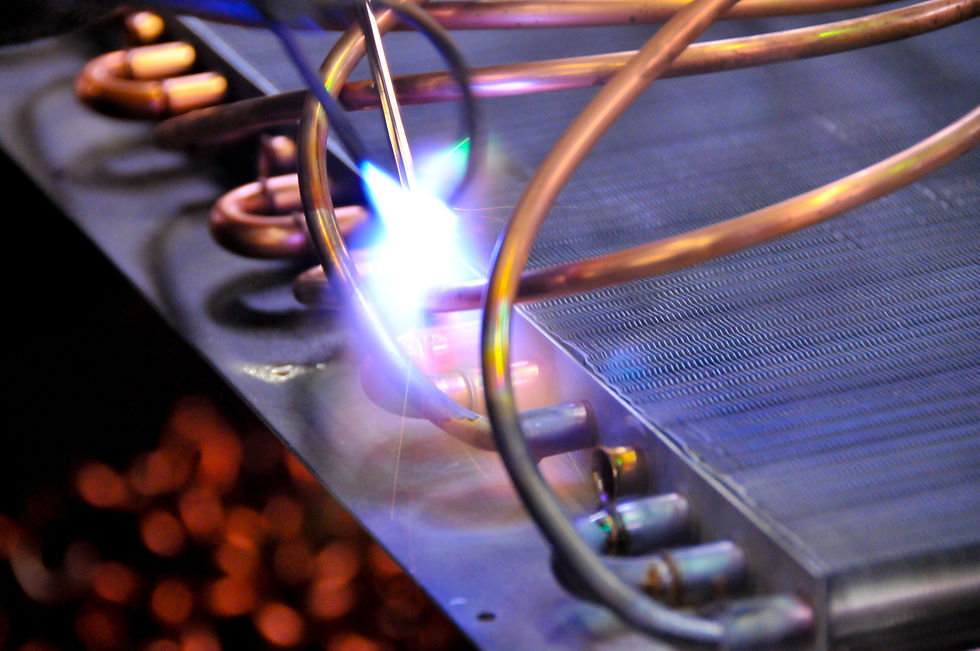The Impact of Steam Coils on HVAC System Efficiency
- Krystal Morrell

- Oct 12, 2023
- 2 min read
Updated: Mar 4, 2024

Steam coils are an essential component in many HVAC systems, but how do they work and why are they so important? In this article, we will dive into the science behind steam coils and explore their role in heating and cooling systems.
What are Steam Coils?
Steam coils are heat exchangers that use steam to heat air. They are typically made of copper tubes with aluminum or copper fins attached to them. The steam flows through the tubes, while the air passes over the fins, transferring heat from the steam to the air. This heated air is then circulated throughout a building to provide warmth.
How Do They Work?
These coils work by utilizing the heat transfer properties of steam. When steam enters the coil, it condenses and releases its latent heat, which is the heat required to change the state of a substance from a liquid to a gas. This heat is then transferred to the air passing over the fins, heating it up. The now-cooled steam exits the coil and is condensed back into water, ready to be reheated and used again.
Compared to Hot Water Heating Coils
Steam coils are often compared to hot water heating coils, as they both use a fluid to transfer heat to the air. However, there are some key differences between the two. Hot water heating coils use hot water instead of steam, and the water typically flows through the coil at a lower pressure than steam. This means that hot water heating coils are not as efficient as steam coils, as they require more energy to heat the water to the desired temperature.
Why are Steam Coils Essential?
Steam coils are essential for many heating and cooling systems for several reasons. First, they are highly efficient, as steam has a higher heat transfer coefficient than hot water. This means that steam coils can heat air more quickly and effectively than hot water coils. Additionally, steam coils are more versatile, as they can be used in a variety of applications, including heating, cooling, and dehumidification.
Another reason why steam coils are essential is their durability. Steam coils are made of durable materials, such as copper and aluminum, which can withstand high temperatures and pressures. This makes them ideal for use in industrial and commercial settings where they may be exposed to harsh conditions.
Coil Design
The design of steam coils is crucial to their efficiency and effectiveness. The size and spacing of the fins, as well as the number and diameter of the tubes, all play a role in how well the coil can transfer heat. A well-designed steam coil will have a larger surface area for heat transfer, allowing for more efficient heating of the air passing over it.
In conclusion, steam coils are an essential part of your commercial heating solutions. Their efficient heat transfer properties, versatility, and durability make them a popular choice for industrial and commercial applications. Understanding the science behind steam coils can help you make informed decisions when it comes to selecting and maintaining these important components in your heating and cooling system.





Comments